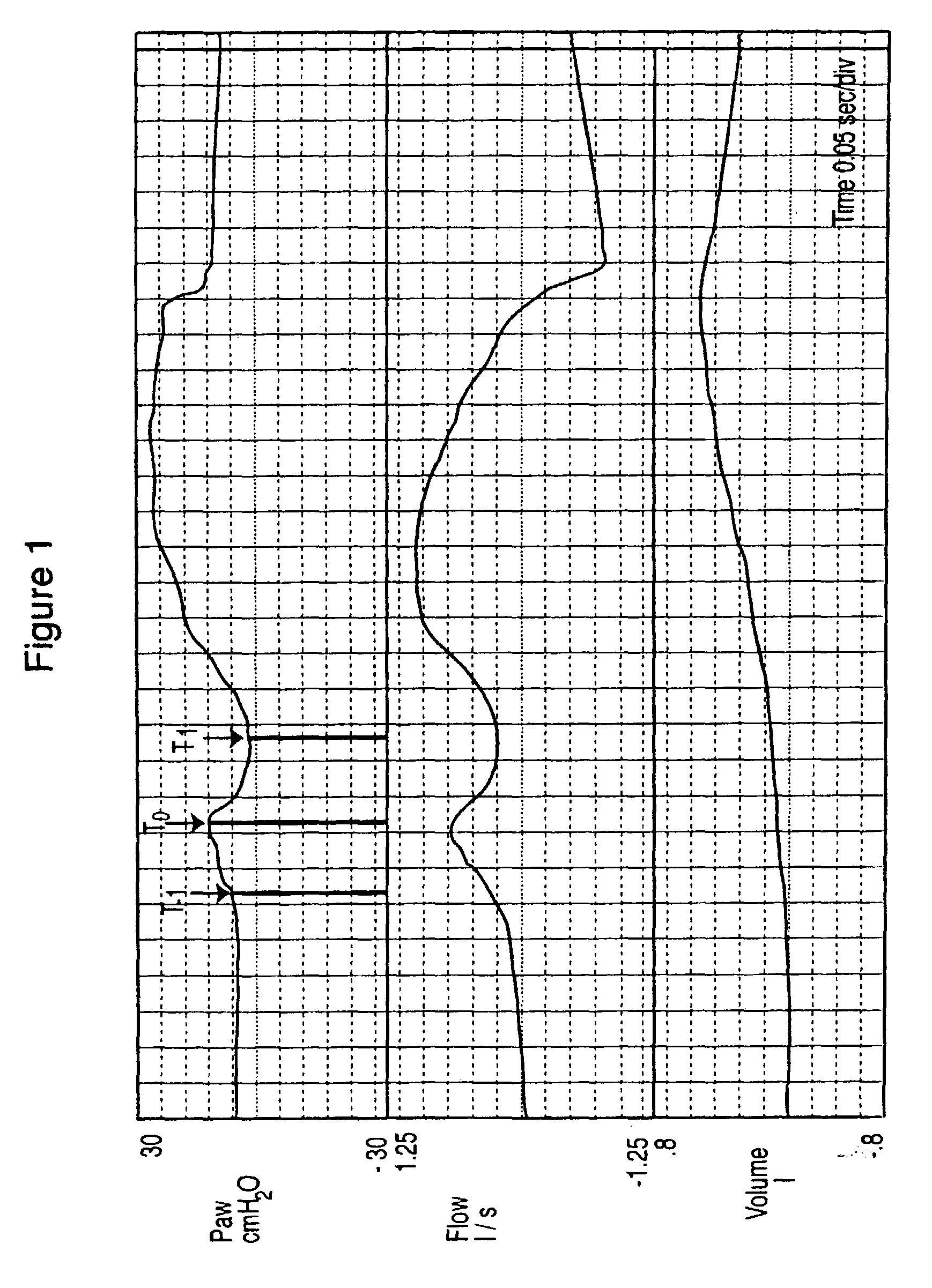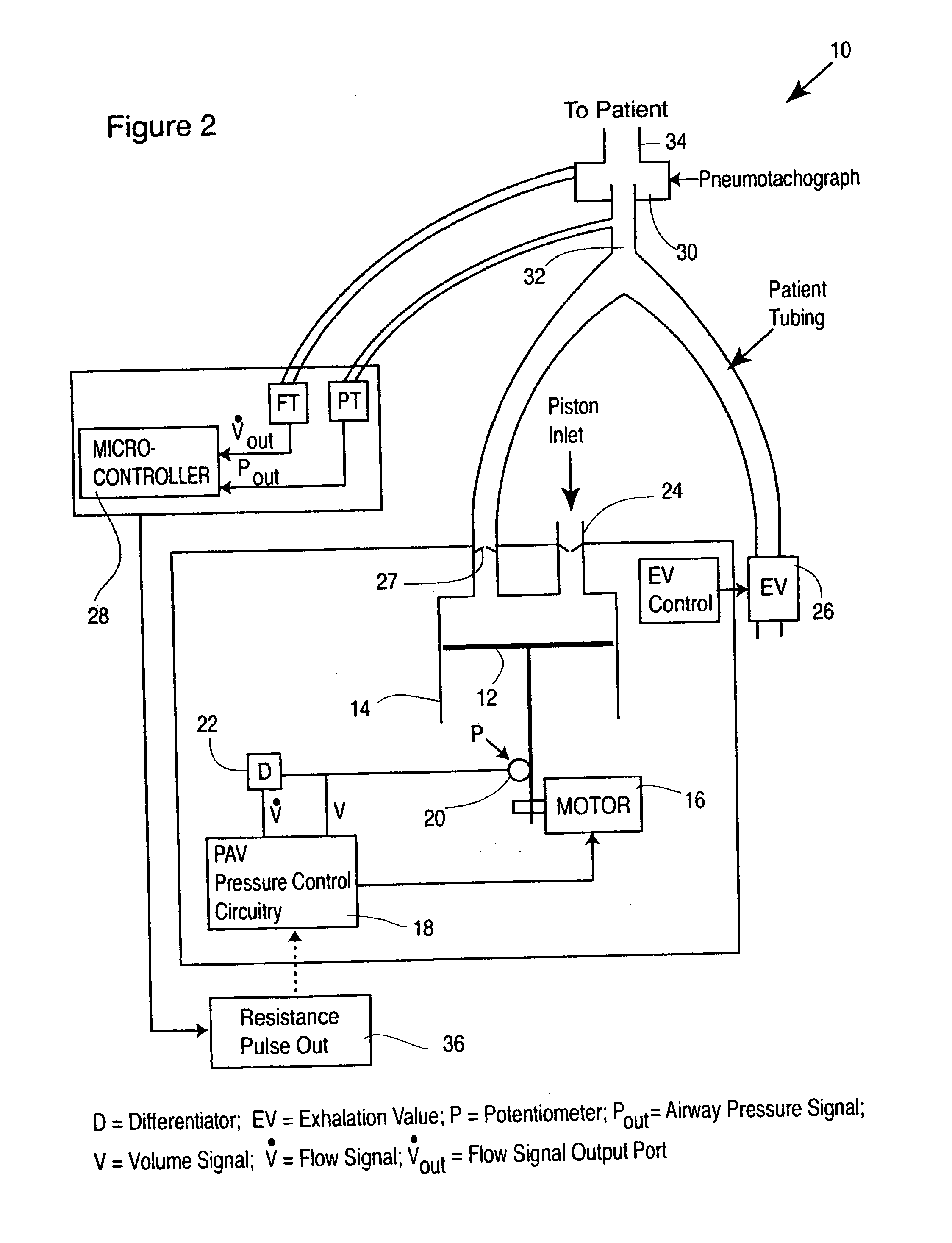Method and apparatus for determining respiratory system resistance during assisted ventilation
- Summary
- Abstract
- Description
- Claims
- Application Information
AI Technical Summary
Benefits of technology
Problems solved by technology
Method used
Image
Examples
Embodiment Construction
[0074] FIG. 2 shows an overview of a preferred embodiment of apparatus for carrying out the present invention. This preferred embodiment reflects the actual system used to validate the inventive procedures of the invention in 67 ventilator-dependent patients. The preferred embodiment has several components. Although in FIG. 2, these components are shown as distinct from each other, such representation is for the sake of illustration of these components, in actual practice all three components can be incorporated within a single unit (the ventilator).
[0075] A gas delivery unit 10 is a ventilator system that is capable of delivering proportional assist ventilation (PAV). A variety of mechanical systems can be used to deliver PAV and some are commercially available, which use blower-based, piston-based and proportional solenoid systems. PAV is described in U.S. Pat. No. 5,107,830 (Younes), assigned to the assignee hereof and the disclosure of which is incorprorated herein by reference....
PUM
 Login to View More
Login to View More Abstract
Description
Claims
Application Information
 Login to View More
Login to View More - R&D
- Intellectual Property
- Life Sciences
- Materials
- Tech Scout
- Unparalleled Data Quality
- Higher Quality Content
- 60% Fewer Hallucinations
Browse by: Latest US Patents, China's latest patents, Technical Efficacy Thesaurus, Application Domain, Technology Topic, Popular Technical Reports.
© 2025 PatSnap. All rights reserved.Legal|Privacy policy|Modern Slavery Act Transparency Statement|Sitemap|About US| Contact US: help@patsnap.com



